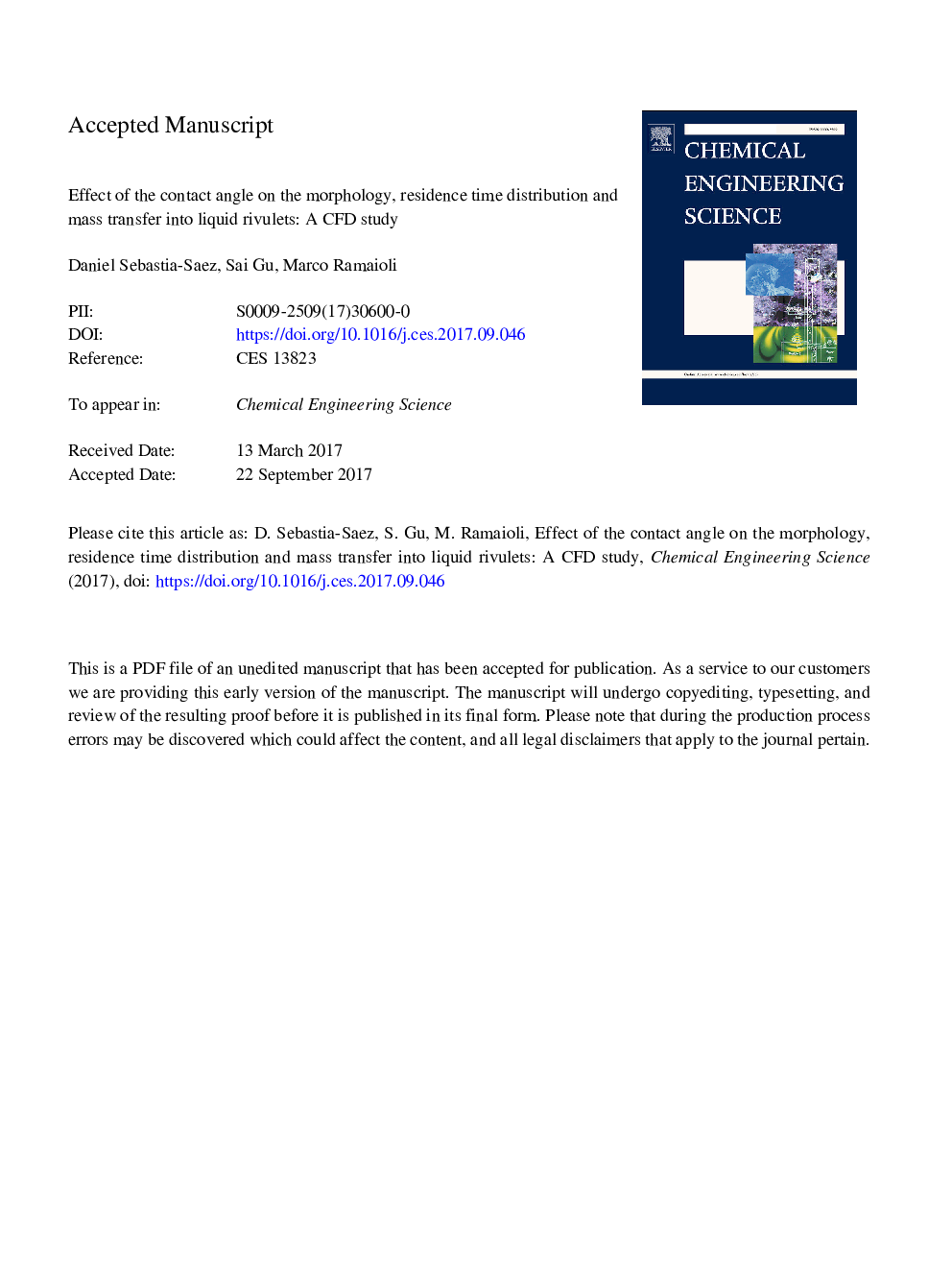| Article ID | Journal | Published Year | Pages | File Type |
|---|---|---|---|---|
| 6588860 | Chemical Engineering Science | 2018 | 35 Pages |
Abstract
Droplets and rivulets over solid surfaces play an important role in a number of engineering applications. We use a Computational Fluid Dynamics model consisting in a smooth inclined plate to study the effect of the contact angle on the morphology, residence time and mass transfer into liquid rivulets. Measurements of the contact angle-using the sessile drop method-between aqueous monoethanolamine solutions and two commercial surfaces used for gas separation, are introduced as boundary condition. Reducing the contact angle from 60° to 20° flattens the rivulet, increasing the gas-liquid interface area by 85%. The cumulative residence time broadens, with an increase of 12% in Ï10, and of 37% in Ï90. There is consequently, a theoretical increase of 68% in the total mass transfer rate. A sensible design of the liquid-solid interaction is therefore crucial to good mass transfer performance.
Related Topics
Physical Sciences and Engineering
Chemical Engineering
Chemical Engineering (General)
Authors
Daniel Sebastia-Saez, Sai Gu, Marco Ramaioli,
